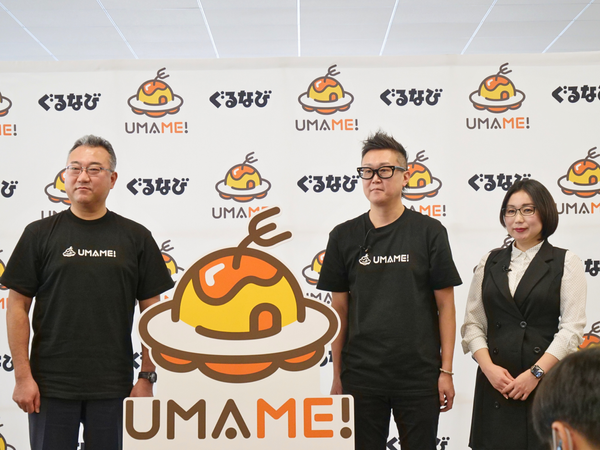Consensus Algorithm ”PoS", Vulnerable To “Monopoly Strategy"
It is only necessary to solve the "Byzantine general problem" to achieve a decentralized agreement. PoS is a mechanism that you can earn rewards with a probability based on how much stakes you bet.

After reading this article, we recommend that you read the article on "Algorand" trying to make a new agreement algorithm
Proof of work (PoW) mining is too harmful for the earth. It is because the bitcoin miner rushed the place where is is cold and with enough electricity all over the world, and they are boosting electricity usage. Interestingly, scientists such as astronomers have fallen into a situation where GPU for research can not be secured (2/2018). Mining is boosting the price of low-price-range graphic cards.
Proof of work (PoW) is inefficient. The hash rate has reached insane range and the ASIC consumes a lot of electricity. There is no correlation between the spent machine power and throughput, and the competition that PoW imposes to miners raises the cost. Miners are throwing enormous amounts of computing resources and electricity into the garbage box.
PoW sets clear limits to throughput. This is the seed of "scalability problem". Bitcoin core developers are not going to improve PoW, but they are stepping up to develop Layer Second to set PoW and tech stack as fundamental layer.
Plan B: Proof Of Stake
In other words, it is necessary only to solve the "Byzantine general problem" to achieve a decentralized agreement. It is natural to think about achieving the dispersion agreement in the form of reducing the tremendous cost of PoW as well. Ethereum creates smart contracts in the chain, not money transaction records. Ethereum must achieve higher throughput than bit coin. The transaction processing of Ethereum already exceeds the bitcoin and it is in the range of 4 times(2/2018).
For this reason Ethereum is moving to adopt PoS. PoS is a mechanism that you can earn rewards with a probability based on how much stakes you bet. Or, "The probability that you acquire the right to create a new block will change according to the share of the coin". In other words, it is a mechanism favorable to rich player.
Compared to PoW, PoS has a much simpler block validation process and can shorten block creation time. PoS was a major concern for the crypto currency community. The first PoS based coin is PPCoin made in 2012. However, PoS at that time was incomplete. Discussions continued after that. In recent years, many chains claiming to be made up with PoS have been coming out and Ethereum is also challenging.
PoS And "Monopoly"
What kind of economics does PoS bring? In PoS, it is assumed that users with many coins do not have the motivation to cause evil behavior in the transaction verification process. The rich will be richer. There is a high probability that big coin holder become a person who creates the next block.
Moreover, large coin holders do not take much risk in the process of increasing coins. The holders only have to hold the coin. In PoW, miner has earned mining fees after paying costs such as ASIC and electricity cost etc. However, in PoS, even if large coin holder does nothing, they can earn rewards(this is called minting reward).
As if the board game "monopoly", major holders might compete to accomplish "monopoly". The blockchain ecosystem is dependent on exchange rate with the legal currency. For small player who won’t be able to win the game, incentive works to sell PoS currency. It will be a downward factor to push the price, pressure sustainability of the ecosystem.
Natural Experiment By NEM
(Author:This article was written in February 2018. Thereafter, various things happened around NEM. People who are interested are encouraged to check the cases by themselves)
What happened to NEM is a natural experiment of what will happen to PoS coin, because NEM has similarity with PoS coin. Although detailed conditions are different, but it is very meaningful to compare NEM with PoS coin. NEM adopts a consensus algorithm called PoI (Proof of Importance). It is a mechanism to distribute coins based on "importance score". However, in reality, the holding amount is the largest factor, which is remarkably advantageous for big holders. PoI has been pointed out as bad version of PoS.
In NEM, big Pump & Dump is occurring in May - June 2016, and December 2017 - January 2018, when newcomer in cryptocurrency area increased. I guess that collective of big holders make Pump & Dump to exploit newcomer who do not know the situation.
Of course it is not possible to conclude that such behaviors are always taken in the PoS currency. However, it is clear that big coin holders are superior to new commers. Incentives works for them to take obviously unfair actions.
Let's check problems of PoS.
Liquidity
PoS adopt the mechanism where the probability of generating blocks increases corresponding to the share of the coin. It is best strategy for Holders to store it as much as possible without using it. However, "saving" deprives liquidity from the market and pressures payment (payment) which is the basic function of cryptocurrency.
Nothing At Stake Problem
- In PoW, the minor reward depends on the allocation of economic resources (computing power). As a result, incentive works to put costs in the correct chain.
- In PoS, unlike PoW, the network operation process does not require a large amount of cost. There is no incentive to support the correct chain necessarily . A coin owner can bet on two forked chains at the same time and has no incentive to solve the folk.
- The person who started the system can "reset" as many times as possible. At the time of the Genesis block, the shareholder's shareholding is 100%. Other participants can also return to the point where their ownership holds and branch off the chain.
- The person who started the system can "reset" as many times as possible. At the time of the Genesis block, the shareholder's shareholding is 100%. Other participants can also return to the point where their ownership exist and fork the chain.
- If there is an attacker, then the attacker need only overpower altruistic nodes (who would exclusively stake on the original chain), and not rational nodes (who would stake on both the original chain and the attacker's chain), in contrast to proof of work, where the attacker must overpower both altruists and rational nodes
Low-Cost 51% Attack
In PoS, it is explained that 51% attack becomes difficult as coin holders tend to hold coin. However, it might be vulnerable to the following strategies.
- The attacker announces that it will buy the coin while proving it has funds equivalent to 51% of the coin
- Holders assume that attack will harm value of the coin, they sell coins. Coin prices go down
- Attackers buy coins at cheap price
Stake Grinding Attack
"Stake grinding" is a class of attack where a validator performs some computation or takes some other step to try to bias the randomness in their own favor. For example, an attacker with small amount of stakes finds block where stakes acquired rights to generate in the blockchain. In order to disguise the attacker win consecutively from the block, they continue to change the header of the block until he wins the bet.
Long Range Attack
Long range attack is an attack where an attacker has an "old" key and uses that key to create a version equivalent to the event. Attackers try to take over the main chain by branching the block chain from the old block and continuing to extend the chain at a faster pace than the main chain.
Reference
Understanding Proof of Stake through it’s Flaws. Part 3— ‘Long Range Attacks’
eyecatch image via kisspng / Rich Uncle Pennybags





